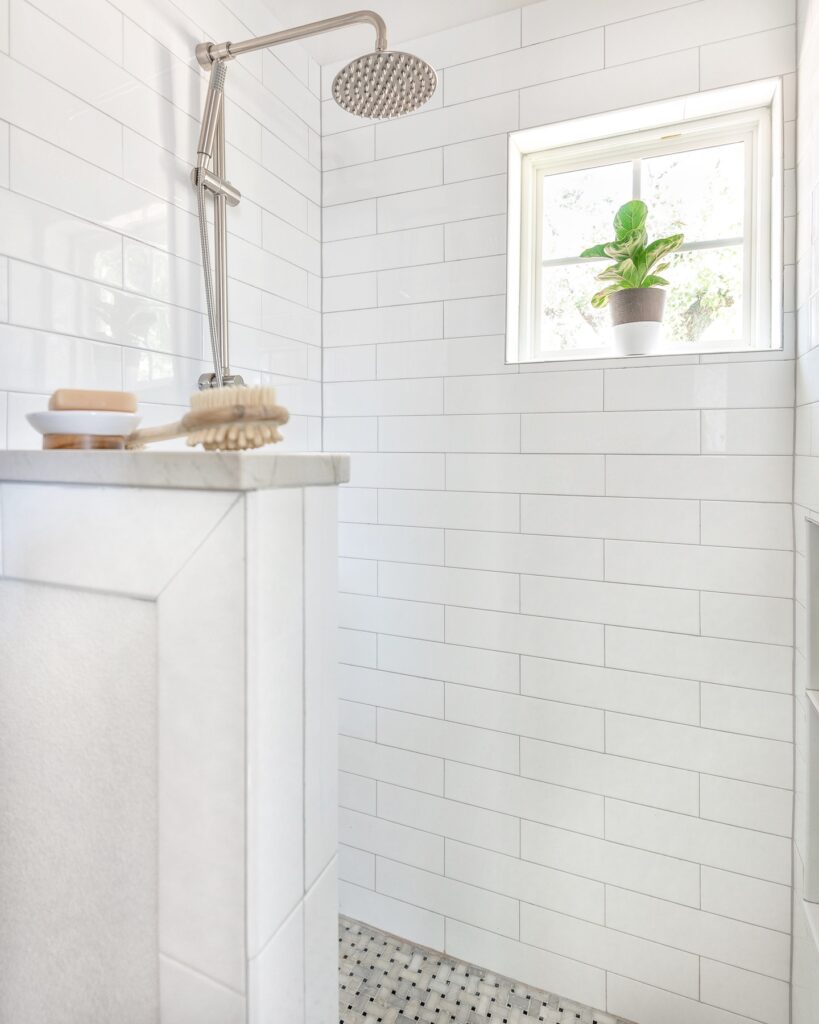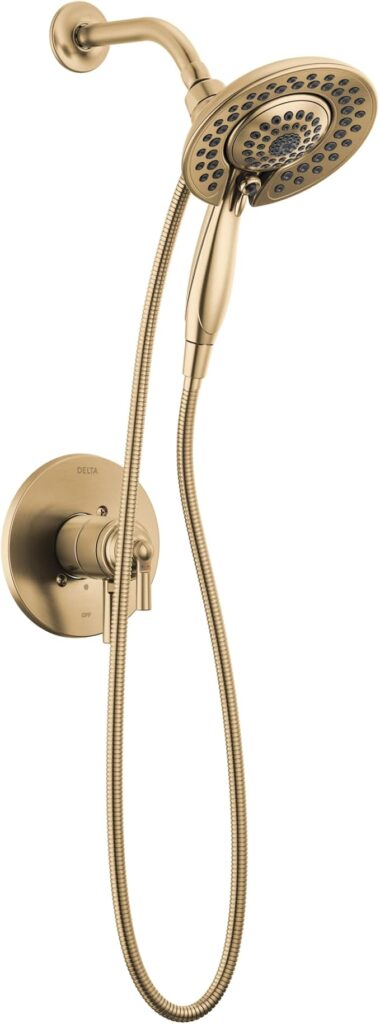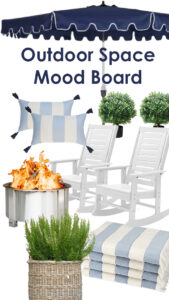
Shower Design Mistakes You Have to Avoid

When you start to envision your dream home, it’s easy to get so involved in certain decisions that you completely miss others. One aspect of home design that is easy to gloss over is shower design. You might think your shower design doesn’t really matter – after all, it just has to get you clean, right?
However, think for a moment about how often you use your shower, and how important showering is for proper hygiene. With that in mind, don’t you want a shower you love that serves you and your family’s needs?
We’ve been designing homes for years at The Old Barn, and we’ve learned a lot about home design. In this blog, I want to walk you through some of the most common shower design mistakes people make when building their home and how to avoid making those mistakes for yourself.
Temperature control
One of the most annoying things about getting in the shower is getting itstarted. What if you could start the water without getting sprayed before you’re ready?
Good news: you can! Did you know your controls don’t have to be placed directly below the shower head? Although underneath the shower head is the most common placement, it’s possible to run your water lines so that you can place your temperature controls wherever you please. Gone are your days of turning the shower on and jumping to get out of the way of a blast of cold water!
If your shower has a door, I recommend placing your controls by the door for easy access. You can also place temperature controls on the wall across from the shower. This helps you avoid getting sprayed when you turn the shower on. If your shower is big enough, you can even get IN to turn it on without getting wet!
Want to really take your temperature control to the next level? You can now purchase digital shower systems, such as the Smart Shower by MOEN, to automatically set the water temperature for you and even create pre-set controls. This makes your shower more customizable (and relaxing) than ever before!
Choice of grout
The grout you use in your shower is a decision you probably haven’t put much thought towards. However, a lot of people don’t realize that the grout is the part of your shower that gets the dirtiest. Therefore, your choice of grout can greatly impact how easy it is for you to keep your shower clean!
Make your grout joints as small as possible and your tile or stone as big as possible. This limits the amount of grout you need to use, making for an overall smoother and easier-to-clean surface!
Additionally, think about the material you use for your grout. The two most popular choices for grout are cement and epoxy.
While both of these are fine choices depending on your project, you should know the advantages of each. Epoxy is non-porous, durable, and easy to clean, while grout is cheaper and comes in more color options.
For this reason, we definitely recommend using epoxy grout in your bathroom. Because the bathroom is such a wet environment, cement grout will take in exponentially more water damage. Additionally, with cement being less durable than epoxy, you’re more likely to see wear and tear on cement grout.
While epoxy grout might be more expensive initially, you’ll save yourself money and time by avoiding laborious maintenance, frequent cleaning, and repairs in the future.
Towel bar placement
If your towel hook or towel bar isn’t reachable from the shower, you will drip water all over the bathroom each time you go to get out. This can cause water damage to wooden cabinets and floors over time and create a safety hazard by increasing the likelihood of falls.
To avoid all of this, make sure your towel bar is accessible from the shower! Having your towel easily accessible from the shower door reduces the amount of water you spread through the rest of the bathroom. All you need to do is make sure your framers add blocking behind the correct wall so that these fixtures don’t wiggle loose.
Don’t skip the handheld wand
Although a single mounted shower head is the standard, handheld wands are seeing a spike in popularity– for good reason! Having a handheld wand in the shower makes cleaning SO much easier, whether it’s yourself, the walls, or the dog!
Additionally, a handheld wand is a fantastic aging-in place decision that ensures your comfort throughout your entire life. A handheld wand allows people with limited mobility and flexibility to properly clean themselves without having to bend or stretch.
I know that some of you might want to skip the handheld wand for aesthetic purposes. With their rising popularity in the past few years, you can find beautiful handheld shower wands in all sorts of materials, colors, and designs to fit the aesthetic of your bathroom!

Footrest niche
A lot of modern showers include niches for easy, convenient, and aesthetically pleasing storage of soaps and other hygiene products. Have you ever considered other ways that a shower niche can elevate your experience?
One of these ways is creating a niche to prop your foot on for shaving! For tub/shower combos, this might not be as crucial of an addition because you can easily prop your foot up on the tub ledge. However, if you opt for a free standing shower anywhere in your build, this addition will make shaving easy and hassle-free.
Here are two bonus tips for you:
- Keep any niche out of eyesight: A lot of the photos of niches you see online have picture-perfect soap bottles in them. I don’t know about you, but my soap bottles NEVER look that pretty. Keep your expectations realistic! Create a niche that’s out of the line of vision when you enter the bathroom. That way, unsightly soap bottles will not ruin your shower’s aesthetic.
- Make the niche sloped: A niche with a sloped bottom edge will shed water towards the drain instead of collecting in the niche. This makes cleaning an easier task for you and decreases the risk of mold from standing water.
Choosing the right size
Everyone knows the experience of showering in a shower that’s too small. Your elbows hit the wall when you try to shampoo your hair, you knock something onto the floor every time you turn, you feel like it’s hard to properly get yourself clean… Feeling cramped and claustrophobic in the shower is not a great feeling!
However, it’s also possible to make a shower that’s too big! If your shower is too large, you will feel exposed and cold because the large space cannot retain the warmth.
What’s the right size, then?
The smallest a shower can be according to code is 30” x 30”. The average walk-in shower is usually anywhere from 36”- 42” wide and 42”- 60” deep, with the average shower size being 36” x 48”. The size of shower that works best for you will depend on a few different factors.
For example, where in the home is this shower? A kids’ bathroom or guest bathroom probably won’t need as big of a shower as the primary bathroom. Additionally, you’ll want to consider the size of the bathroom, the placement of the shower within the room, and whether you want a square or rectangular shower, among other factors.
Rethink the shower bench
Built-in shower benches are becoming more and more common for accessibility reasons. They allow you to sit while you shower, if you need to. However, when I get the request for a built-in shower bench from my floor plan clients, I usually try to steer them away for several reasons.
First, built-in shower benches are known to be a hiding spot for dangerous mold. In a sense, this defeats the purpose of a the bench – they’re meant to help with mobility, but you’ll end up having to bend and reach around to even try to clean it! Also, the last thing I want is for my clients to experience health problems after building their dream home due to unseen mold.
Another reason to avoid built-in shower benches is that they offer no flexibility for changing needs and aging-in-place. If your needs change, and you find yourself needing more space in the shower, you’ll have to do a demo to remove the bench, probably bring in a mold remediation team, and try to match or replace the tile where the bench was. Why create more work for yourself down the line when there are better solutions you can implement in the present?
As a side note… the bench is never under the stream of water where you need it, but over to the side where it’s cold!
Instead of a built-in shower bench, I recommend getting a nice teak bench for your shower. You can move it under the water, and then out of the way when you don’t need it. It will not hide mold, it allows you to sit in the shower, and you can move it wherever you need it!
Design a Home You Love for Life
Building a home is not an easy task to take on. There are so many decisions – big and small – to think about, that it can feel overwhelming at times. We hope this blog post helps you make at least one of those decisions!
For more home design tips and advice, check out some of our other posts:
Your Guide to Choosing the Perfect Countertops For Your Dream Home
5 Ways Your Home Design Can Help You Live a Better Life
Choose the Right Flooring For Your Build
We believe that with the right preparation and knowledge, ANYONE can build the home of their dreams. That’s why we developed our Bootstrap Builders Program for those interested in starting the homebuilding process. This program teaches you EVERYTHING you need to know about the process, from start to finish!
Not only does being your own owner builder give you agency over your build, but did you know it can also save you money? Our Bootstrap Builders save 25% on their overall build simply by cutting out the middle man!
For other questions or if you just want to chat, feel free to reach out! I’d be happy to answer any questions you may have.

Great advice on common shower design mistakes to avoid, It’s so easy to overlook details like water drainage, lighting, and space planning, but those are key elements in creating a functional and comfortable shower. I especially appreciate the tip about avoiding oversized showerheads that can overwhelm a smaller space. The section on proper ventilation is also so important—nobody wants to deal with mold or mildew in a bathroom. It would be interesting to see more on how to incorporate eco-friendly options into shower designs, like low-flow showerheads or sustainable materials. Overall, this is a very useful guide for anyone designing or renovating their shower space.
Information on your shower is excellent. I am building a new house at this time and I intend to employee these useful ideas.